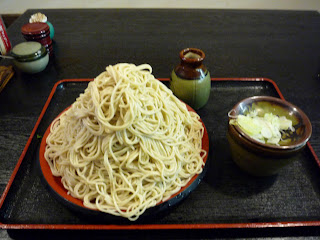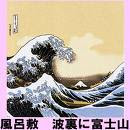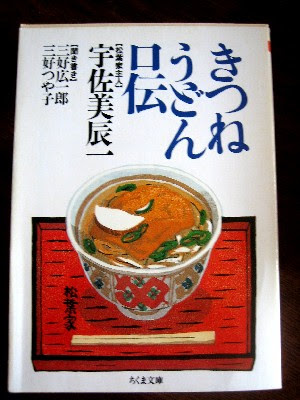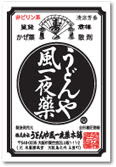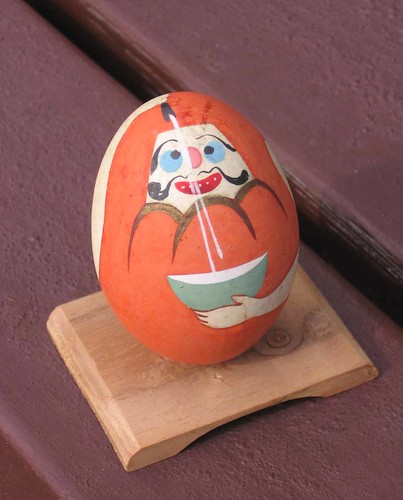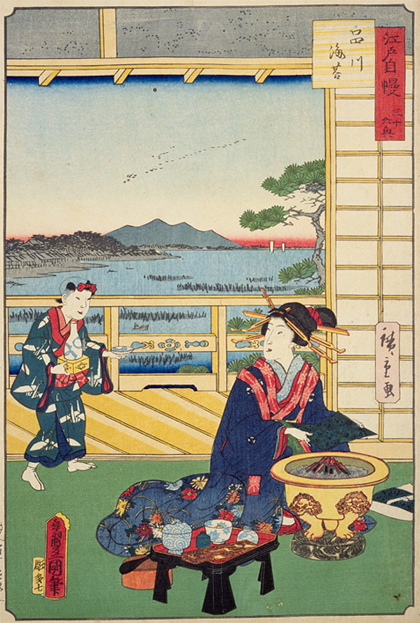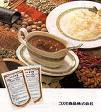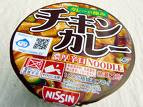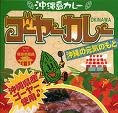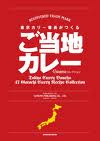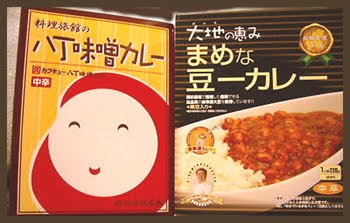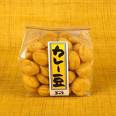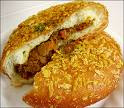::::::::::::::::::::::::::::::::::::::::::::::::::::::::::::::::::::::::::::::::::::::::::::::::::::
Akita Prefecture
 Akita Prefecture (秋田県, Akita-ken) is a prefecture of Japan located in the Tōhoku Region of northern Honshū, the main island of Japan. The capital is the city of Akita.
Akita Prefecture (秋田県, Akita-ken) is a prefecture of Japan located in the Tōhoku Region of northern Honshū, the main island of Japan. The capital is the city of Akita.Separated from the principal Japanese centres of commerce, politics, and population by several hundred kilometres and the Ōu and Dewa mountain ranges to the east, Akita remained largely isolated from Japanese society until after the year 600. Akita was a region of hunter-gatherers and principally nomadic tribes.
Like much of the Tōhoku Region, Akita's economy remains dominated by traditional industries, such as agriculture, fishing, and forestry.
© More in the WIKIPEDIA !
. WASHOKU
The town of Uga and sketches of pretty girls advertisements
秋田県羽後町, Aoi Nishimata 西又葵
Akita Komachi あきたこまち (the belle of Akita) Rice Brand
. The Kanto Matsuri 竿燈 "pole lantern festival"
beginning of August
::::::::::::::::::::::::::::::::::::::::::::::::::::::::::::::::::::::::::::::::::::::::::::::::::::
Regional Dishes from Akita 秋田の郷土料理
. . . CLICK here for Photos !
akebi no karakkozuke アケビの殻っこづけ akebia skin stuffed with meat and vegetables
akebi no nikuzume
CLICK here for photos
also eaten in Yamagata
akebi no tenpura from the skin of the plant.
asazuke あさづけ vinegared rice, a summer dish
:::::::::::::::::::::::::::::::::::::::::::::::::::::::::::::::::::::::::::::::::::::::::::::::::::::
damakko nabe だまっこ鍋
In Akita one of their most famous nabe is Damakko Nabe (だまっこ鍋).
The little balls in the pot are actually made from rice, they’re supposed to look like snowballs to give it a winter theme. The broth for the hot pot is made from soy sauce, chicken stock, and Japanese burdock and then a variety of vegetables and chicken are added. Damakko nabe is considered to be Akita’s soul food. Warm up around a Japanese hot pot in Akita.
- source : facebook -
:::::::::::::::::::::::::::::::::::::::::::::::::::::::::::::::::::::::::::::::::::::::::::::::::::::
hatahata ハタハタ
hatahata sushi ハタハタ寿し hatahata fish sushi
hatahata, Sandfisch, Arctoscopus japonicus
Its season is winter.
It is essential for the people to survive in the winter months.
Beliebt als Sushi oder mit Salz gegrillt (shioyaki) in Akita.
Er hat keine Schuppen und wenig kleine Gräten und die Wirbelsäule lässt sich leicht vom Fleisch ablösen. Wenn man den gegrillten Fisch fest am Schwanzende anfasst, lässt sich die Wirbelsäule einfach vom Kopfende her herausziehen.
Der weibliche Hatahata trägt die Eier, die als „Eiersack“-Snack beliebt sind (burikko ぶりっこ). The egg sack can be the size of a man's fist.
buriko ブリコ
. . . CLICK here for burikko Photos !
quote
Hata-hata is really sticky and strange-looking fish because it doesn’t have any scales. What the most famous about Hata-hata is its egg, Buriko. It is really big about to explode, and the taste is chewy and jelly like. It is cooked as Shotsuru nabe, Hata-hata pot, Hata-hata sushi, and broiled fish. Many old Akita people love it because of its history.
According to my parents, people in my grandparents and my parents generation ate Hata-hata almost every day in winter instead of sweets since fishermen had a big catch of Hata-hata, and it was really cheep like 500 yen per one box which contained about 50 Hata-hata. However, the number of Hata-hata decreased because of too mach catch, and Hata-hata costs 500 yen for 3 at present. Therefore, old Akita people miss Hata-hata in their memory, and want to eat it even if it costs high.
鰰、 魚雷
In Japanese, Hata-hata is expressed in Kanji as Fish plus God, or Fish plus Thunder. Since Hata-hata gather close to beach when it thunders, people might think Hata-hata is God of fish.
source : discover-jp.blogspot.com : kayanon
. . . CLICK here for Photos !
hatahata ハタハタ is the name of the fish, but its roe is called "roe from buri" (buriko). During the Edo period, the lord of Satake (former name for Akita) forbid to eat the roe of hatahata. So the fishermen caught it nevertheless and called it "roe from buri" (buriko).
Another story tells of the lord of Mito, Satake Yoshinobu 佐竹義宣, who was transferred to live in Akita. Since yellowtail (buri) was not served for the New Year food, he called the other roe BURIKO and enjoyed it as such as a nostalgic food.
buriko are the round sacks of eggs that float in the sea. The roe taken from the fish after cutting it up is much softer.
buriko is seldom eaten raw, because the egg membrane is very hard. It is put in vinegar and soysauce and sometimes fried just a little.
The semem sacks of the male are called shirako 白子.
It is a deep-sea fish that comes to shallow wates along some areas, where rivers flow into the sea and there is plenty of kelp to shelter the young fish. The buriko is said to be in various colors, according to what the fish eat most.
Grilled hatahata was one of the fish arranged on a tray as offering for the Namahage Demons during the New Year celebrations of the Oga peninsula.
Namahage Demons
Daruma Museum
The fish was caught in such numbers, that it was fermented in large barrels into a salty liquid called "shotsuru" or "shottsuru しょっつる【塩汁】
". This process laste for three years, until the fish was almost completely discomposed. This shotsuru liquid is used to flavor many dishes in Akita, best known is a hodgepodge with hatahata and this sauce, shotsuru nabe しょっつるなべ【塩汁鍋】 (kigo for winter).
. . . CLICK here for shottsuru Photos !
This is a kind of fish sauce, gyoshoo 魚醤(ぎょしょう).
shottsuru was also used to make a special sushi of cooked rice and pieces of hatahata.
This kind of sushi is very ancient, called "cooked rice sushi" (izushi, iizushi いずし)。
Izushi 飯寿司, Summer Food
hatahata sushi ハタハタ寿
:::::::::::::::::::::::::::::::::::::::::::::::::::::::::::::::::::::::::::::::::::::::::::::::::::::
hikiwari nattoo ひきわり納豆 fermented soy beans, hacked small
eaten with sugar
. . . CLICK here for Photos !
Hinaidori 比内鶏(ひないどり)/ Hinai jidori 比内地鶏 Chicken from Hinai, Odate. Kiritanpo with these chicken
WASHOKU : Kiritanpo (kiritampo) きりたんぽ skewers of mashed rice
iburi gakko, iburigakko いぶりがっこ smoked pickles with radish
smoked radish pickles
from Yokote town
. . . CLICK here for Photos !
imo no ko jiru, imonokojiru いもの子汁 with satoimo yam
Inaniwa udon 稲庭うどん noodles from Inaniwa town. With a long tradition.
. . . CLICK here for Photos !
Reference
.......................................................................
ishiyaki ryoori 石焼料理 prepared with hot stones
from the Hunters of Oga Peninsula to keep warm. Stones from Oga are especially strong when thrown in water. Nowadays it is prepared in barrels of cedar wood
Ishiyaki – Kochen mit heißen Steinen
Es zischt und brodelt – plötzlich steigt Dampf auf. Geschickt lässt der Koch einen heißen Stein in den kleinen hölzernen Bottich gleiten. Im Nu wird alles gegart!
Beim nur in dieser Gegend typischen Ishiyaki werden Steine im Feuer erhitzt und dann in die Suppe gelegt, um sie zu erwärmen. Diese Zubereitungsart entdeckten die Fischer entlang der Halbinsel Oga, die oft den ganzen Tag auf dem Meer unterwegs waren. Mittags kam ein hölzerner Bottich mit frischen Fischen und Meeresfrüchten auf die Planken, die Würze brachte das salzige Meerwasser.
Auch am Strand wurde oft auf diese Art gekocht. Wenn sich dort kein Holzbottich fand, wurden die Fische einfach mit Wasser in eine Felsvertiefung gelegt und die Vulkansteine dazugegeben, die auf einem Feuer erhitzt worden waren. Das lokale Vulkangestein Ignimbrit oder Schmelztuff erwies sich in Japan als besonders geeignet, da dieses Gestein enorm temperaturfest ist.
Heute ist die Brühe meistens eine gesalzene Suppe, es wird aber auch Miso-Paste verwendet. Die Würze der Brühe basiert in jedem Restaurant traditionell auf einem Familiengeheimnis. Im großen Bottich aus Zedernholz werden die tagesfrischen Fische und das Gemüse der Saison in mundgerechten Bissen in der Brühe angerichtet. Anschließend wird der Bottich auf den Tisch gestellt und die Zutaten werden mit heißen Steinen gekocht. Jeder kann sich nach Belieben aus dem Bottich bedienen. Dazu werden Reis und kleine Teller mit eingelegtem Gemüse und Häppchen gereicht.
.......................................................................
junsai nabe じゅんさい鍋 junsai vegetable hodgepodge
kasube no karagya ni かすべのからぎゃ煮
. . . CLICK here for Photos !
kasupei is dried manta fish. Boiled with soy sauce it is a dish for a celebration in the Akita region.
There is also a kasube matsuri festival
keiran けいらん
kiritanpo nabe きりたんぽ鍋 hodgepodge with kiritanpo
kiritanpo is also a speciality of Aomori.
koi no amani 鯉の甘煮
kujira くじらかやき whale meat soup
kujirajiru くじら汁
salted whale meat in miso soup
matsukawa mochi 松皮餅

orandayaki, oranda yaki オランダ焼き "Holland waffles"
a kind of Imagawa yaki waffle, but filled with ham and mayonaise.
The dough is sweetened with honey.
.......................................................................
shottsuru, shotsuru nabe しょっつる鍋
sauce from salted, fermented hatahata fish, when this fish was caught in large quantities.
. . . . . dadami nabe だだみ鍋
- quote
Shottsuru (しょっつる) is a type of fish sauce from Akita Prefecture, which is one of the 3 major fish sauces of Japan along with Ishiru from Ishikawa Prefecture and Ikanago-shoyu from Kagawa Prefecture.
Akita’s fish sauce is distinctive in its ingredients. It is made from Hatahata (sandfish) caught off the coast of Oga Peninsula.
Shottsuru (塩汁、塩魚汁) (lit. salt fish broth)
can be dated back to the early Edo period, and was traditionally made solely with the fish and salt. Now it has been produced in modern technique with additional ingredients, but there is a brewery who still produces it in the traditional method
Hatahata is a sandfish. Akita Prefecture has the largest catch of Sandfish in Japan. The fish has been an important protein sauce for Akita people in the old days, which was even sung in a famous folksong (“Akita-Ondo”). Today even designated as the prefectural fish!
How does Shottsuru taste like?

Despite how fishy it may sound, it is surprisingly mild and rich in flavor. Shottsuru is the main ingredient in Akita’s signature winter dish, Shottsuru-nabe, a hot pot with Hatahata and tofu and other ingredients. Also, in recent years, contemporary chefs are adopting some innovative ideas and recipes: the most popular style is the Italian style as in the picture !
- source : ohtazawako.blogspot.jp
.......................................................................
tamago mochi だまこもち
tamakko nabe だまっこ鍋
.......................................................................

Yokote yakisoba 横手やきそば fried noodles from Yokote
Thick wheat noodles with a fried egg on top, and fukujinzuke pickles.
It was served to children after WWII as a snack in the afternoon.
In 2009 the fourth B-1 Grand Prix was held in Yokote City in Akita Prefecture
A total of 26 dishes competed in the 2009 contest. The winner was a dish called Yokote yakisoba (fried noodles) from the host city itself. Yakisoba is eaten throughout Japan, but the Yokote variety is different in that it features noodles that are straight, thick, and boiled (rather than steamed), has cabbage and ground pork as its main other ingredients, is topped with a fried egg, and comes with sweet, crunchy pickles called fukujin-zuke on the side. The sauce used to flavor the noodles is a combination of Worcestershire sauce with a fish or other broth. Many established restaurants in Yokote have their own secret sauce recipes that have been handed down from generation to generation.
Yokote yakisoba was first produced in 1953, the creation of a local restaurant that specialized in okonomiyaki (thick, savory cabbage pancakes). Though originally designed to be a children's snack, the noodles caught on and soon came to be served as a regular main dish. Four restaurants were chosen as the Yokote yakisoba champions for 2009 in a competition in which the judges considered such criteria as how the noodles were fried and the balance between the noodles and sauce. Two of the four, Kuidoraku Yokote Ekimae Shiten and Idehaya, are conveniently located near Yokote Station.
- source : web-japan.org/trends
.......................................................................
yoochuu chokoreeto 幼虫チョコレート chocolate in the form of insect larvae
mostly like little beetle larvae from kabutomushi カブトムシの幼虫
They are covered with white sugar and the face is dark.
. . . CLICK here for Photos !
from Yokote town
More
Akita 郷土料理 レシピー
*****************************
Things found on the way
Dämonen von der Halbinsel Oga
»Whoooooohoho! War einer nicht brav? Weint etwa jemand? Hat die Schwiegertochter auch alle ihre Aufgaben im Haushalt ordentlich erledigt? Whoooooohoho!«
Mit großen hölzernen Messern und Wassereimern erscheinen gespenstisch aussehende Dämonenpaare am Neujahrstag, brüllend und wild umherspringend toben sie von Haus zu Haus. Manchmal dringen sie bis in die Wohnküche vor und erschrecken die Kinder.
Die Namahage-Dämonen sind mit riesigen Holzmasken und langen Strohmänteln kostümiert und kommen jedes Jahr zu Neujahr in die Häuser. Der Mann trägt eine rote, die Frau eine blaue Maske. Der Ursprung des Wortes Namahage erklärt auch gleich den Grund für das Erscheinen der Dämonen. Namahage stammt von namomi o hagu und bedeutet »kleine Brandwunden abkratzen«. Dabei handelt es sich um kleine Brandverletzungen an Händen und Beinen, die man sich schnell an der offenen Feuerstelle in der Küche zuziehen kann. Wer viele Brandstellen hat, zeigt damit, dass er im Winter faul am Herd gelegen hat. Die Namahage-Dämonen kommen mit ihren riesigen Messern ins Haus, um die faulen Kinder und Schwiegertöchter zu strafen, indem sie ihnen »die Brandstellen abkratzen«. Zur Besänftigung erhalten die Dämonen vom Hausherrn Reiswein und Mochi-Reiskuchen. Als Boten der Götter segnen die Namahage sowohl den Haushalt als auch alle Bewohner und versprechen Gesundheit, eine gute Ernte sowie gute Fischfangerträge im neuen Jahr.
Die Halbinsel Oga reicht wie eine spitze Zunge ins wilde Japanische Meer. Bezeichnenderweise heißt der höchste Berg in dieser Region »Berg des kalten Windes« (Kanpūsan). Neben dem Leuchtturm, der hoch oben auf diesem Berg in die Luft ragt, kann man mit Maiskorn-Softeis die Aussicht auf die Vulkanseen und das Gebiet Hachirōgata genießen. Hachirōgata war ursprünglich einer der größten Seen Japans, bevor er 1964 trockengelegt und in Ackerflächen umgewandelt wurde. Das Gelände liegt vier Meter unter dem Meeresspiegel und ist damit der tiefste Punkt Japans.
Am Ende der Halbinsel, dem Kap Nyūdō, befinden sich neben einem großen Parkplatz einige Souvenirläden. In den Hinterzimmern hocken die Namahage und trinken Tee. Sie warten nur darauf, dass der nächste Touristenbus eintrudelt. Dann laufen sie brüllend los und erfüllen vor den Läden ihre Pflicht als groteske, monströse Fotomodelle.
*****************************
HAIKU
*****************************
Related words
***** WASHOKU : Regional Japanese Dishes
:::::::::::::::::::::::::::::::::::::::::::::::::::::::::::::::::::::::::::::::::::::::::::::::::::















